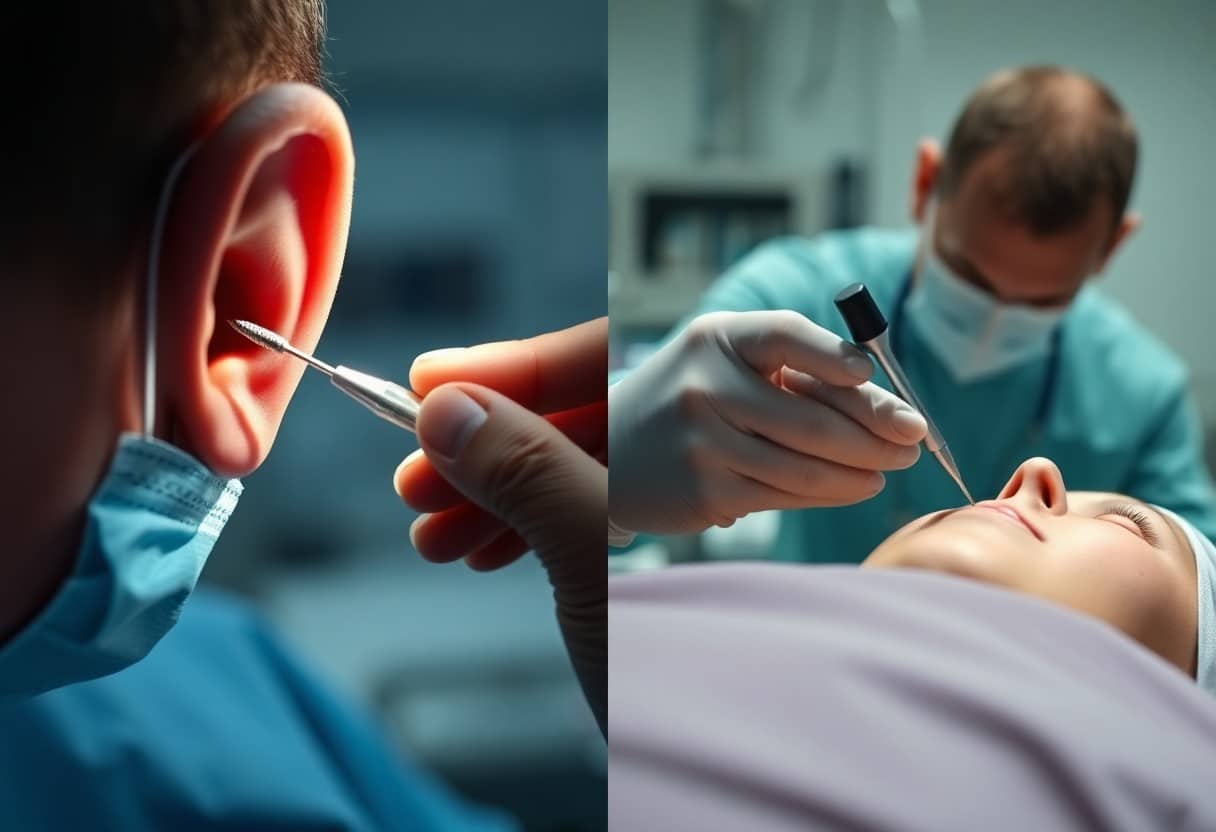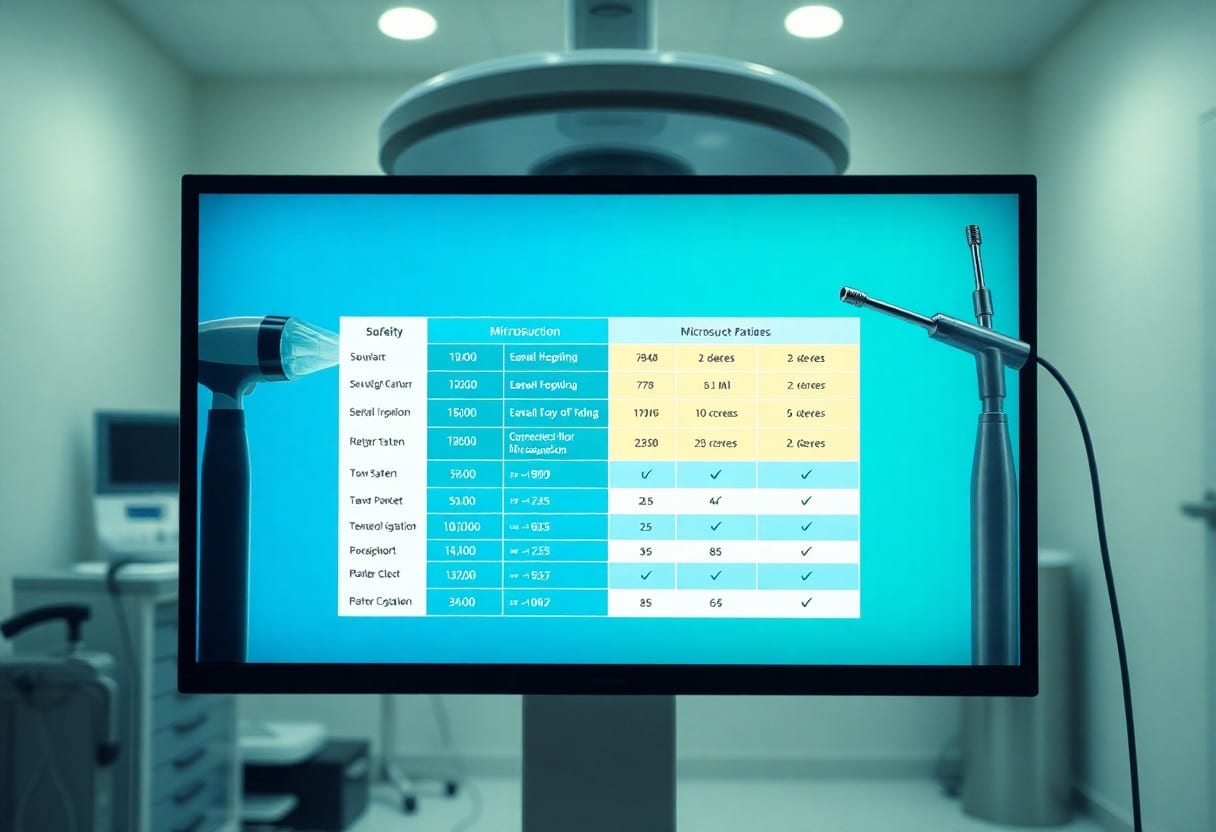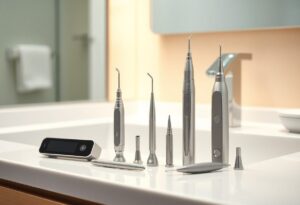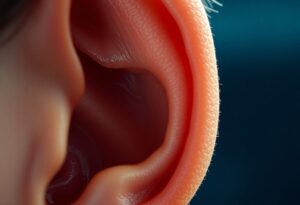With the increasing awareness of ear care, you may find yourself pondering the best method for earwax removal: ear irrigation or microsuction. This post examines into the safety and effectiveness of both techniques, helping you make an informed decision tailored to your needs. Understanding the differences will empower you to choose the most suitable option for maintaining your auditory health.

Key Takeaways:
- Microsuction is generally considered safer, as it minimizes the risk of injury to the ear canal and eardrum.
- Ear irrigation can be effective but carries a higher risk of complications, such as perforation or infection.
- Individual patient conditions and preferences should guide the choice between microsuction and ear irrigation.
The Mechanics of Ear Irrigation and Microsuction
How Ear Irrigation Works
Ear irrigation involves using a syringe-like device to gently flush the ear canal with warm water or saline solution. This method helps dislodge and remove earwax buildup, which can cause discomfort and hearing issues. By softening the wax and allowing it to flow out, you can typically achieve a clearer ear canal. Proper technique is crucial to avoid complications such as damaging the ear drum.
The Process of Microsuction
Microsuction uses a small suction device to remove earwax and debris from the ear canal. This method is performed under direct visualization, often with the aid of an otoscope, allowing precise targeting of the wax. It is generally quicker and requires no water, minimizing the risk of complications associated with fluid in the ear.
The process of microsuction is particularly effective for individuals with excessive earwax or conditions that make them unsuitable for irrigation, such as a history of ear infections or perforated eardrums. The procedure typically takes only a few minutes, and patients often notice immediate relief from symptoms. Practitioners can adjust the suction’s intensity to ensure both safety and comfort, making it a preferable choice for many.
Safety Profiles: Evaluating Risks of Each Method
Common Risks Associated with Ear Irrigation
Ear irrigation carries several common risks, primarily involving discomfort and potential injury. You may experience pain, dizziness, or an ear infection if the water is too forceful. Additionally, if you have a perforated eardrum, this method can exacerbate the issue, leading to further complications and potential hearing loss.
Potential Complications of Microsuction
Microsuction offers a generally safer alternative, yet it is not without its complications. In rare cases, you might face irritation or bleeding in the ear canal from the suction process. Severe injuries such as eardrum perforation, although infrequent, remain a concern, especially if the procedure is performed incorrectly or without adequate expertise.
In particular, while microsuction is designed to be gentle, improper technique can lead to significant issues, such as damage to the delicate structures of the ear. Reports indicate a small percentage of patients may experience post-procedure discomfort, requiring further medical attention. A thorough assessment by a qualified professional reduces these risks, ensuring that the method is applied effectively and safely.
Effectiveness in Earwax Removal
When Ear Irrigation Outshines Microsuction
Ear irrigation becomes particularly effective in cases of excessive cerumen build-up, especially when the wax is soft and manageable. This method employs a gentle flow of warm water to flush out the ear canal, making it easier to remove large amounts of debris that microsuction may struggle with. For individuals with a history of regular earwax problems, irrigation can serve as a preventive measure, clearing out wax before it solidifies and causes symptoms.
Scenarios Where Microsuction is More Effective
Microsuction proves to be more effective in instances where the earwax is hard, compact, or when the presence of certain conditions complicates earwax removal. This method utilizes a low-pressure suction to remove wax precisely without introducing moisture, making it ideal for delicate situations. For patients with a history of eardrum perforation or auditory canal abnormalities, microsuction presents a safer alternative, significantly lowering the risk of damage during the procedure. This precision allows practitioners to navigate difficult or challenging cases efficiently, ensuring better outcomes.
In specific clinical scenarios, such as when dealing with chronic earwax impaction or narrow ear canals, microsuction stands out. It allows for meticulous dislodgement of stubborn wax while simultaneously providing a clear view for professionals. Patients who have undergone previous surgical procedures in the ear or possess health conditions affecting ear drainage may also benefit from microsuction, as it avoids the risks associated with water exposure. This technique’s versatility accommodates varying patient needs effectively, showcasing its superiority in particular circumstances.
Patient Experiences: Comfort and Satisfaction
Feedback from Ear Irrigation Users
Your experience with ear irrigation may vary, but many users report immediate relief from blockage after the procedure. Some individuals express contentment with the gentle flow of water flushing out wax, noting minimal discomfort during treatment. However, a fraction describes feelings of pressure or mild discomfort, which typically subsides quickly. Overall, the general sentiment leans towards satisfaction, particularly for cases involving significant buildup.
Testimonials from Microsuction Patients
Professional Recommendations: What Experts Say
Audiologists’ Views on Ear Cleaning Techniques
Audiologists generally advocate for gentle and minimal intervention when it comes to ear cleaning. They often emphasize the natural self-cleaning ability of the ear and recommend alternatives to invasive methods. They also highlight that unless you’re experiencing blockage or discomfort, earwax should not be removed aggressively, as it plays an important role in ear health.
ENT Specialists on Choosing the Right Method
ENT specialists suggest selecting ear cleaning methods based on individual needs, medical history, and specific conditions. They favor microsuction for its precision and lower risk, particularly for individuals with a history of ear problems. In contrast, they may recommend ear irrigation in specific cases, ensuring that patients understand the associated risks.
ENT specialists often point out that your overall ear health and any prior complications should heavily influence the method you choose. For instance, if you’ve had surgeries or recurrent infections, microsuction may be the preferred choice due to its tailored approach. They also stress the importance of consulting a professional to avoid complications, as self-treatment can lead to more significant issues like trauma or infection. Personalization in your ear care approach allows for safer, more effective outcomes tailored to your unique ear health needs.

Cost Comparison: Weighing Financial Implications
| Service Type | Estimated Cost |
|---|---|
| Ear Irrigation | $60 – $150 |
| Microsuction | $100 – $250 |
Price Points of Ear Irrigation Services
Ear irrigation services typically range from $60 to $150, depending on the clinic or healthcare provider. Many practices offer bundled services, which might include consultation and follow-up visits for the same price, making this an attractive option for budget-conscious individuals.
Costs Associated with Microsuction Treatments
Microsuction treatments generally cost between $100 and $250. The higher end of the price range often reflects additional expertise required for the procedure and the use of specialized equipment. Clinics with more advanced technology may charge more for enhanced safety and effectiveness.
Microsuction costs can also include consultation fees, which may be separate or bundled with the treatment. Some healthcare providers might offer package deals for multiple sessions if you experience frequent earwax buildup, providing potential savings in the long run. Additionally, insurance may cover part of the expenses, depending on your policy and the necessity of the treatment.
Alternatives to Ear Irrigation and Microsuction
At-Home Solutions for Earwax Management
You can manage earwax buildup at home using a few simple methods. Over-the-counter ear drops are widely available and can help soften wax, making it easier to clear. Oils such as mineral, baby, or olive oil can also be used to lubricate the ear canal, encouraging natural wax expulsion. Additionally, a warm washcloth placed over the ear may aid in loosening built-up wax. Regular gentle cleaning of the outer ear with a damp cloth keeps the area clean without risking deeper issues.
Natural Remedies and Their Efficacy
Natural remedies for earwax management include various oils and solutions touted for their ability to soften wax and promote its natural elimination. While some people find success using minerals or tea tree oil, scientific evidence supports only a few methods as truly effective. You might encounter conflicting advice on these options, and their efficacy can vary greatly from person to person. For safe and reliable results, being cautious and informed about these remedies is necessary.
Natural remedies often aim to dissolve or soften earwax to facilitate its removal. For instance, a mixture of equal parts hydrogen peroxide and water can effectively break down wax, but it requires careful application to avoid irritation. Essential oils may provide benefits, yet some, like eucalyptus or tea tree oil, can cause allergic reactions or sensitivity. Consider starting with milder solutions, and assess how your body responds. Consulting a healthcare professional before trying new remedies is advisable to ensure safety and effectiveness.
Cultural Perspectives: Global Approaches to Ear Care
Ear Cleaning Traditions in Different Countries
Various cultures employ distinct ear cleaning techniques, often passed down through generations. In Japan, the practice of ear cleaning, known as “mimi souji,” involves a trained specialist using tools to gently remove wax. In contrast, some African cultures utilize natural products, like shea butter, to soften and extract earwax. In the Middle East, it’s common to seek ear cleaning through traditional herbal remedies, reflecting a deep-rooted belief in natural healing methods.
How Cultural Practices Influence Perceptions of Safety
Cultural beliefs play a significant role in shaping your perceptions about the safety and effectiveness of ear cleaning methods. For instance, some societies trust indigenous practices and prefer home remedies over medical interventions, viewing them as safer and more aligned with their traditions. In contrast, Western cultures often prioritize clinical methods like microsuction and irrigation, associating modern medicine with reliability and lower risk.
Your perspective on ear care methods can be deeply influenced by cultural context. In regions where traditional practices dominate, you might perceive ear cleaning as a communal and familial act, emphasizing trust in natural remedies. However, in healthcare-centric societies, scientific backing of procedures tends to prevail, leading to a belief that medical professionals offer the safest options. This dichotomy highlights how cultural narratives shape your understanding of safety and efficacy, often leading to varying levels of comfort with different techniques.
Summing up
Considering all points, you should weigh the benefits and risks of ear irrigation and microsuction based on your specific situation. Microsuction typically offers a safer and more precise method for ear wax removal, minimizing the risk of complications. However, ear irrigation can be effective in certain cases if performed by a qualified professional. Ultimately, discussing your options with a healthcare provider will ensure you choose the safest and most effective approach for your ear health.
FAQ
Q: What is ear irrigation?
A: Ear irrigation is a process that involves flushing out the ear canal using water or saline solution to remove earwax buildup or debris.
Q: What is microsuction?
A: Microsuction is a method where a small suction device is used to gently remove earwax and debris from the ear canal, often under direct visual guidance.
Q: Which method is safer for earwax removal?
A: Microsuction is generally considered safer, especially for individuals with perforated eardrums or infections, as it does not involve water, reducing the risk of complications.
Q: Which method is more effective for removing excessive earwax?
A: Microsuction is often deemed more effective for complete and precise removal of earwax, as it provides better visibility and control during the procedure.
Q: Are there any risks associated with ear irrigation?
A: Yes, potential risks of ear irrigation include discomfort, risk of infection, perforation of the eardrum, and dizziness, particularly if not performed correctly.



